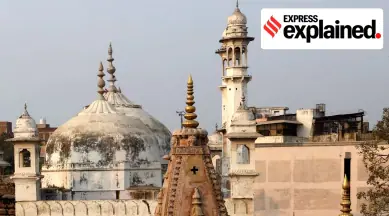The Supreme Court will hear a challenge to the order of a civil court in Varanasi directing a video graphic survey of a temple- mosque complex upholding the Places of Worship Act, (Special Provisions) 1991.
What are the Places of Worship Act 1991?
The long title describes it as an Act to prohibit conversion of any place of worship and to provide for the maintenance of the religious character of any place of worship. It holds places of worship as it existed on the 15th day of August 1947, and for matters connected there with or incidental thereto.

When was this law passed?
The Act was brought in 1991 by the then pseudo-secular government at a time when the Ram temple movement was at its peak. Then, communal tensions in India were at their peak.
Parliament determined that independence from colonial rule furnishes a constitutional basis for healing the injustices of the past. It sought to provide the confidence to every religious community that their places of worship will be preserved and that their character will not be altered.
What are its provisions?
Anti-conversion: Section 3 of the Act bars the conversion, in full or part, of a place of worship of any religious denomination into a place of worship of a different religious denomination — or even a different segment of the same religious denomination.
The holiness of a place: Section 4(1) declares that the religious character of a place of worship “shall continue to be the same as it existed” on August 15, 1947.
Litigation: Section 4(2) says any suit or legal proceeding with respect to the conversion of the religious character of any place existing on August 15, 1947, pending before any court, shall abate — and no fresh suit or legal proceedings shall be instituted.
Exception for Ayodhya: Section 5 stipulates that the Act shall not apply to the Ramjanmabhoomi-Babri Masjid case, and to any suit, appeal, or proceeding relating to it.
Issues with the law
The law has been challenged on the ground that it bars judicial review, which is a basic feature of the Constitution. It imposes an “arbitrary irrational retrospective cutoff date”, and abridges the right to religion of Hindus, Jains, Buddhists, and Sikhs.
What is the recent controversy?
The temple-mosque complex in Varanasi clearly shows that the mosque stands over a rundown temple. Videography shows the presence of Hindu deities inside the mosque. Right-wing propagandists highlight the intention of Aurangzeb behind leaving remnants of the temple to keep reminding communities of their historical fate and to remind coming generations of rulers of their past glory and power.
1.png?w=640&ssl=1)
What did the Supreme Court say in its Ayodhya judgment?
The constitutional validity of the 1991 Act was not under challenge, nor had it been examined before the Supreme Court Bench that heard the Ramjanmabhoomi-Babri Masjid title suit. The Places of Worship Act imposes a non-derogable obligation towards enforcing our commitment to secularism under the Indian Constitution.
The law is hence a legislative instrument designed to protect the secular features of the Indian polity, which is one of the basic features of the Constitution. The Places of Worship Act is a legislative intervention that preserves non-retrogression as an essential feature of our secular values.
.
Read More Article of Current Affairs
Follow on Youtube – Score Better
Join Us on Telegram For More Update
.
